
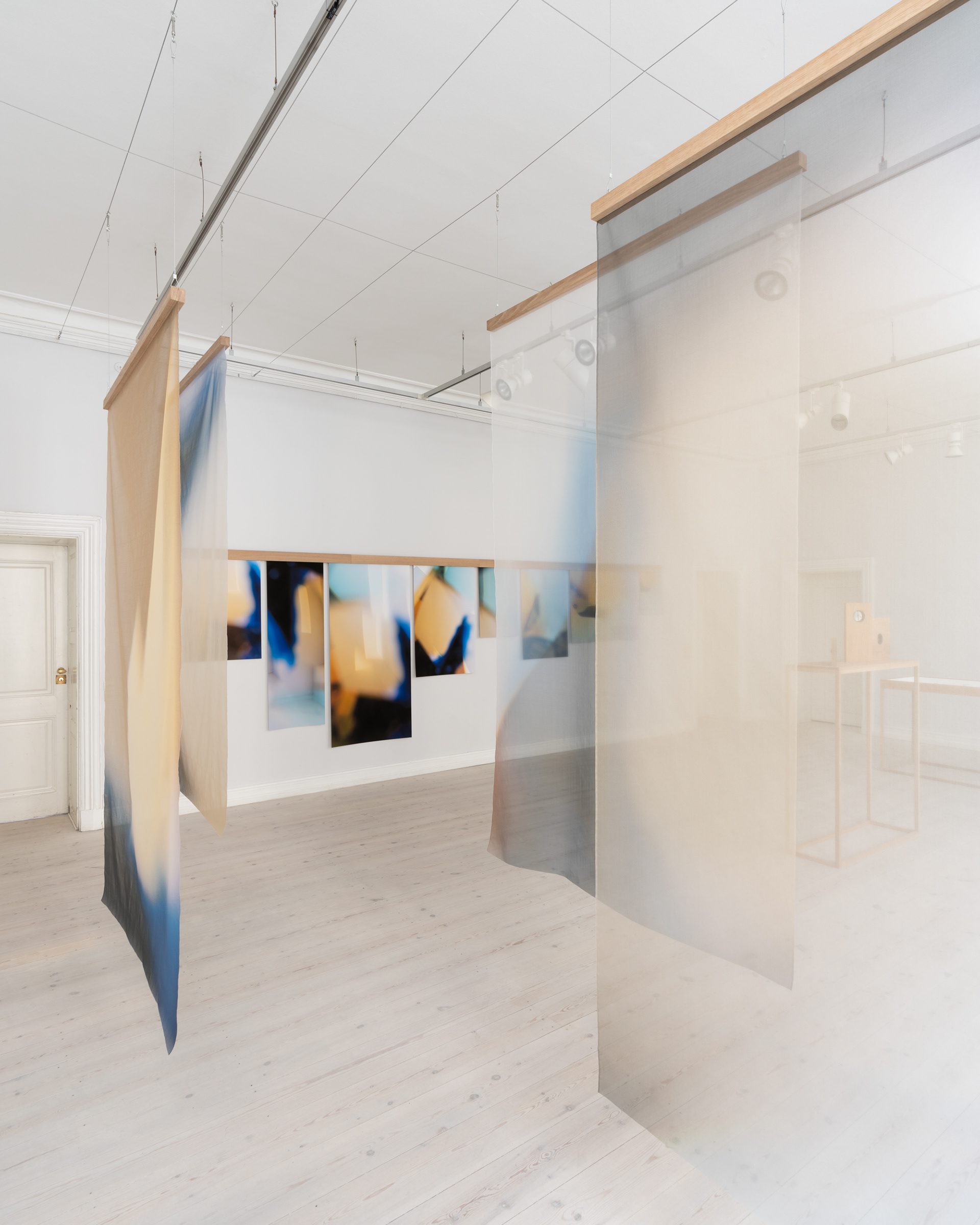
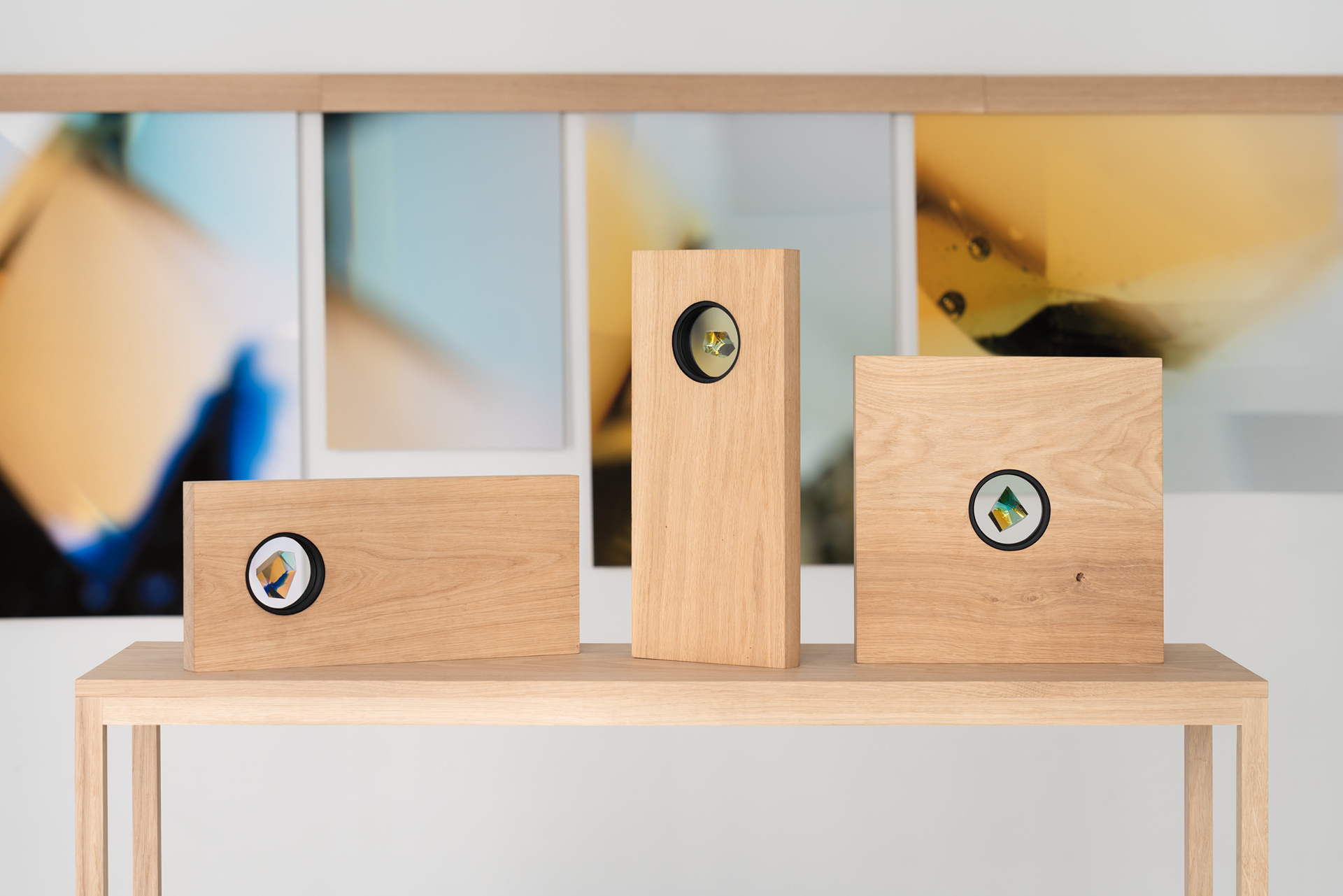
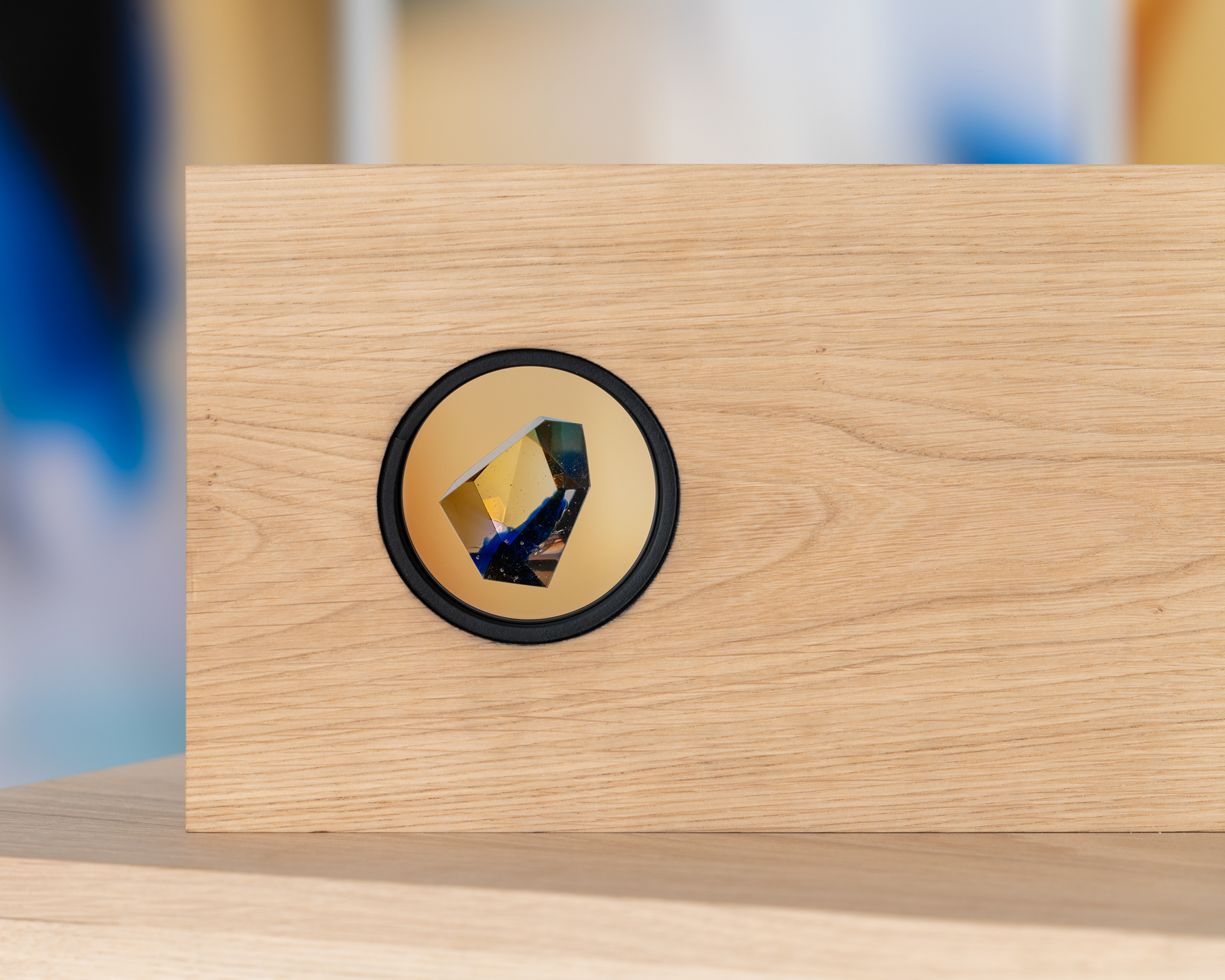
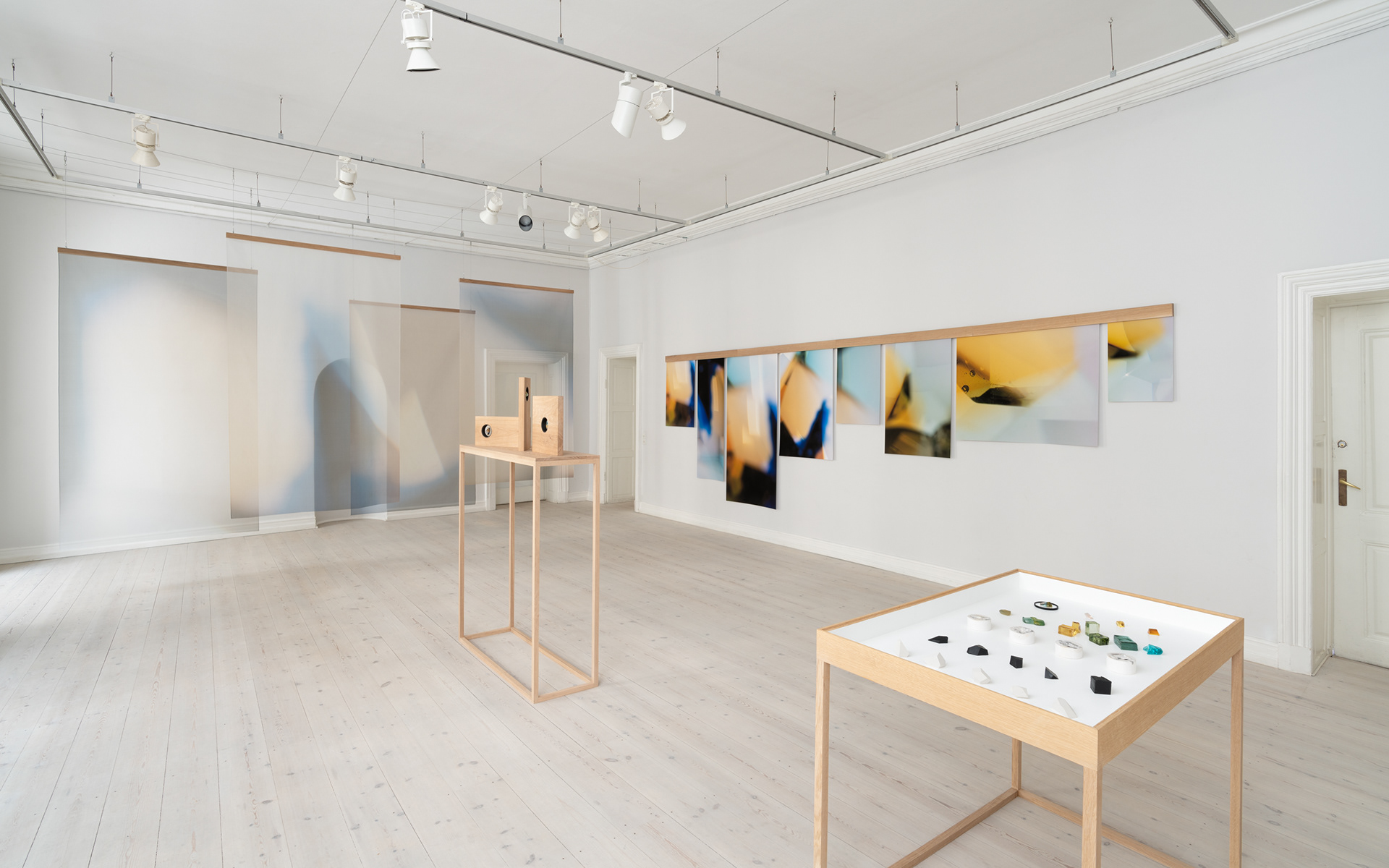
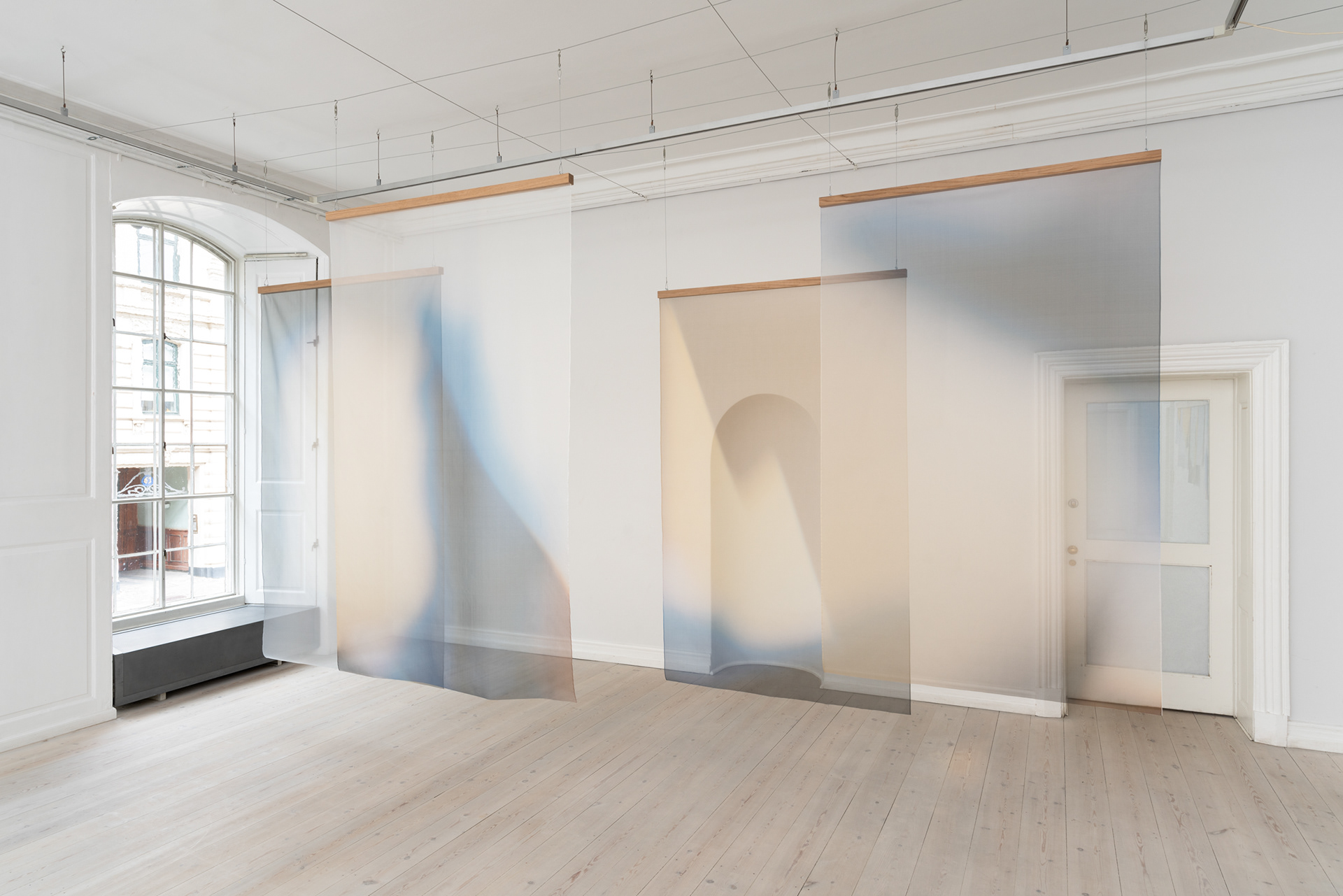
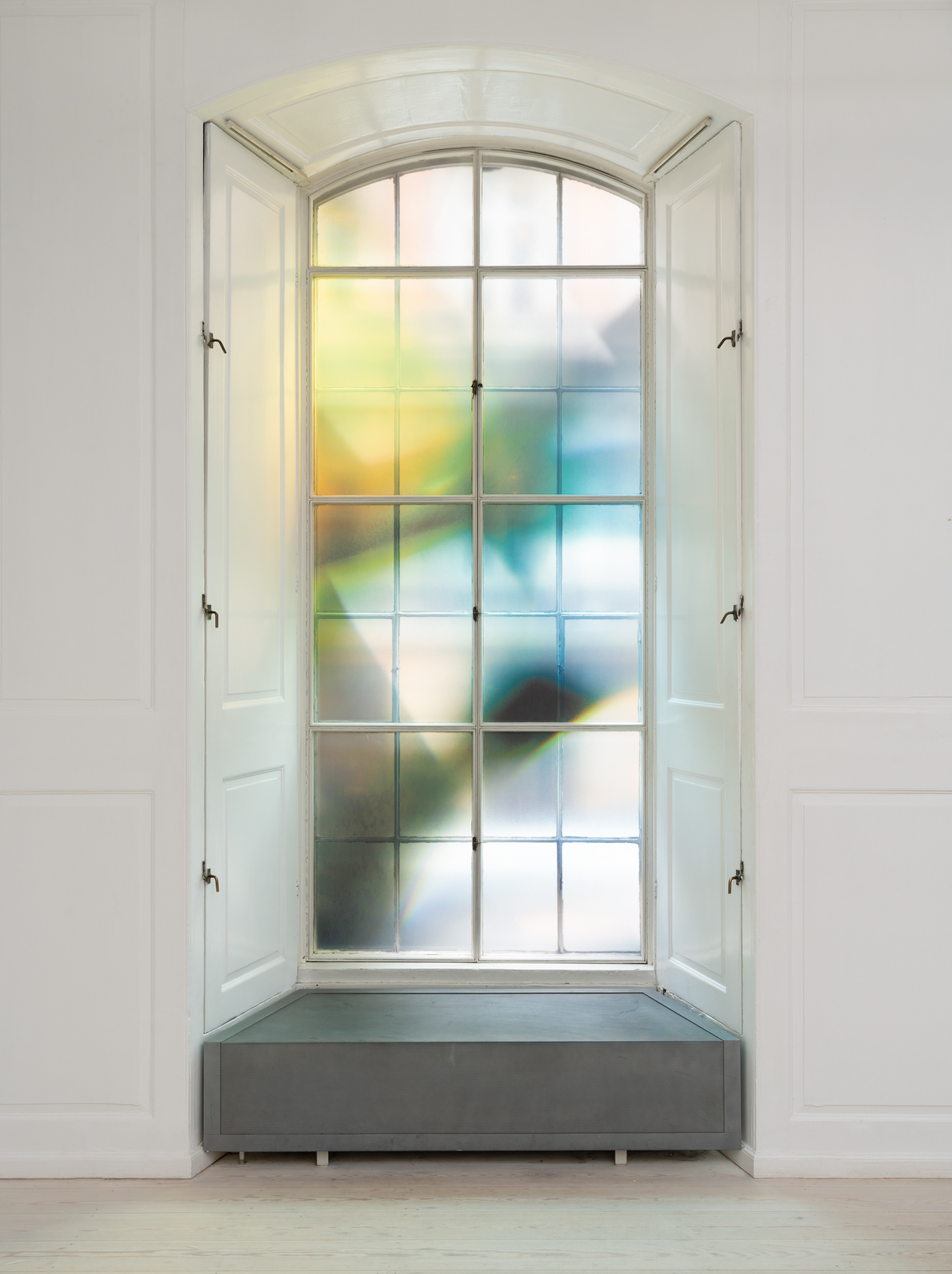
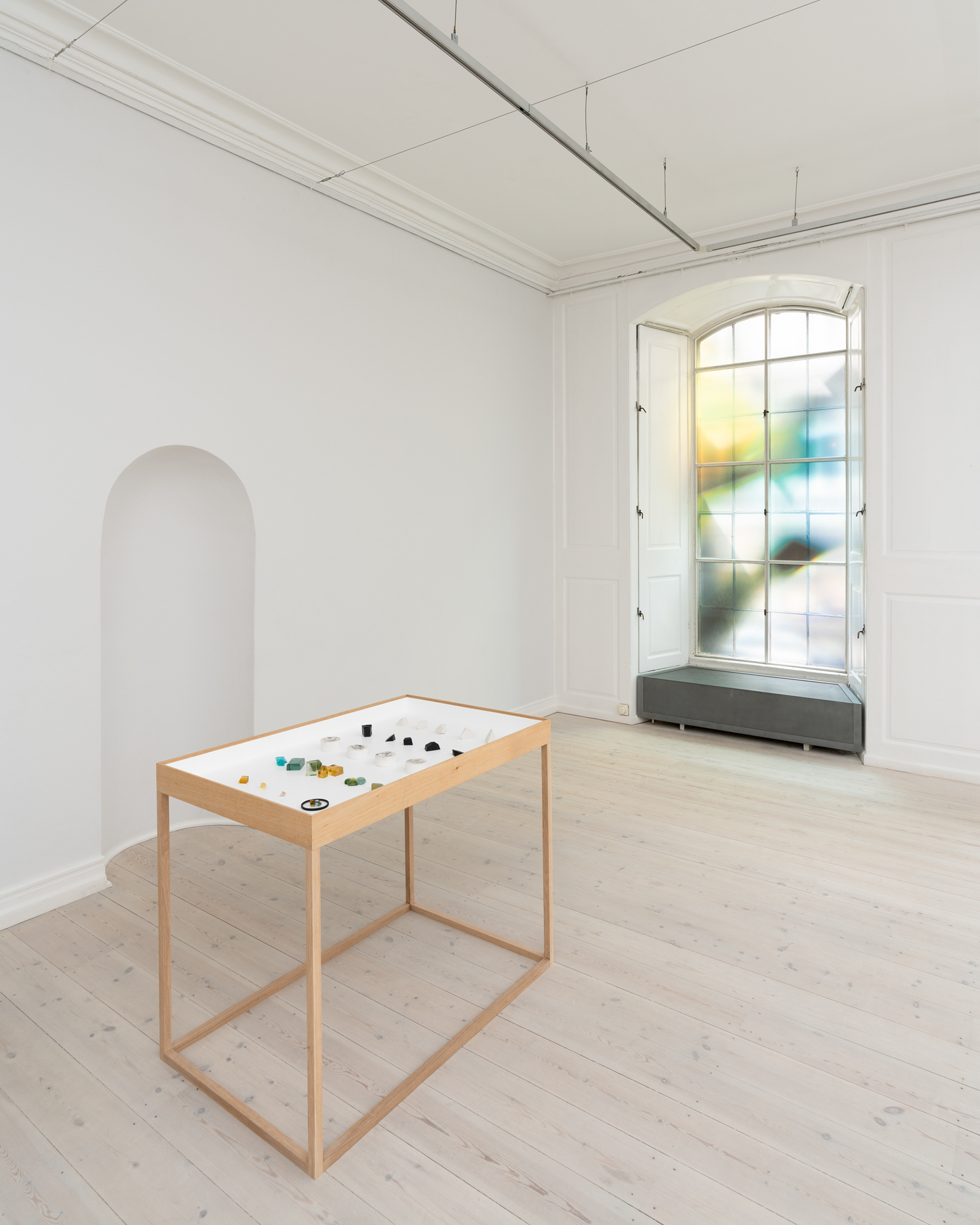
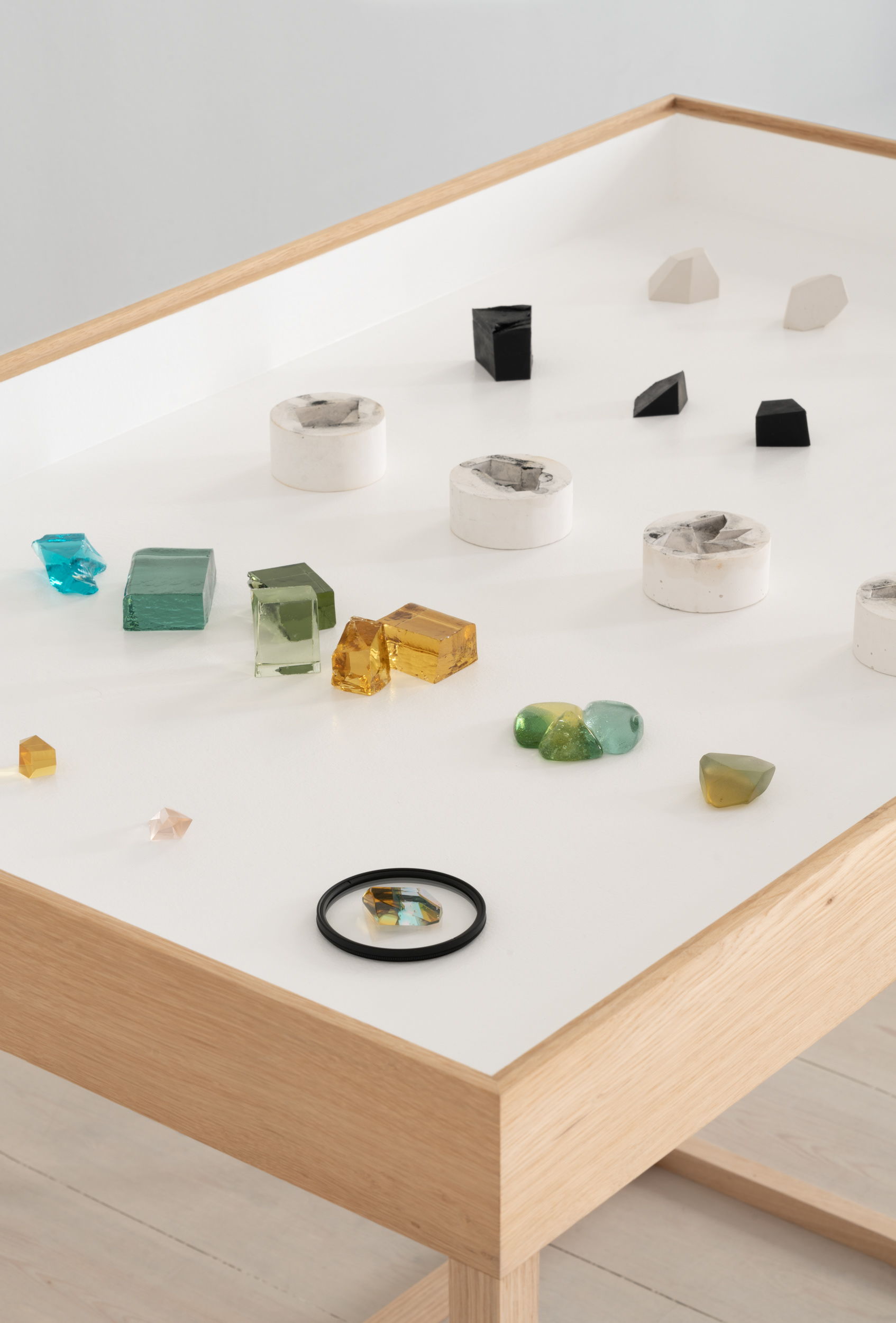
Photo: David Stjernholm
SUPERPOSITION
2020
Glass lens / Photography
Printed on silk organza, paper and foil.
SUPER POSITION
- The gaze as a mean for renegotiation
Anne Thomasen
We all experience the world through a gaze - a gaze made up of habitus. This is exactly what art critic John Berger emphasize when he writes "The way we see things is affected by what we know or what we believe" (John Berger. Ways of Seeing, p 1). The binary decoding in our gaze, which comes before both language and writing, is fundamental to our individual understanding of the visual. When Mette Colberg examines the qualities of glass through her production of and her work with her crystal-like lenses, it is precisely to influence our gaze and make us aware of the implicit choices that lies within it.
Colberg has questioned the dualistic nature of glass as both a form and a filter, since she started working with the material back in 2003. With the exhibition SUPERPOSITION, Colberg explores how the world we live in is understood through perception, and how visual shifts can create a foundation for new understandings.
The term superposition is known from quantum physics and is used to describe the quantum mechanical phenomenon where particles can exist in multiple places simultaneously when they are not captured by a gaze. This thinking is reflected in the innate qualities of glass as something we can both look at but also look through. When we look at glass, a clear presence and a clear absence arise - a scenario that can be understood as the superposition of glass. Both states are part of reality and are central to Colberg in her work, where glass is examined as both rare form and photographic filter.
Colberg’s fascination with photography as a tool for research and as a medium is expressed in the exhibition through the use of cropped angles, glass and light. She uses photography as a view point that creates a focus on our understanding of our perception of materiality, space and time. As Berger discuss in Ways of Seeing, the camera served as a tool for the early human understanding of the subjectivity of the gaze firstly in terms of our physical position.
“The camera isolated momentary appearances and in so doing destroyed the idea that images were timeless. Or, to put it another way, the camera showed that the notion of time passing was inseparable from the experience of the visual (except in paintings). What you saw was relative to your position in time and space. It was no longer possible to imagine everything converging on the human eye as on the vanishing point of infinity” (John Berger. Ways of Seeing, p 11).
This argument gives us an even clearer understanding of the gaze as something, that is formed by several parameters - our habitus but also by our physical conditions considering time and space. So, people sharing almost the same background would possibly still experience a visual manifestation differently based on when and where they are situated physically. The importance of physical circumstances is especially experienced through the Colberg’s textile and foil works, as they are precepted differently from every direction and at every time of the day. As you move around them, they change the space you are in making you question the room you are situated in as well as your gaze. The delicate textile works are from some angles perceived as saturated and from others translucent, and in their overlap new visual changes appear. The foil work in the window transforms both the street and the buildings, while the day light throws the work's colors and shapes into the exhibition space and transforms both walls and floors. You clearly understand how one object can be seen in many different ways and also how you can sometimes control parts of this difference.
Furthermore, there is the issue of choice connected to the human gaze, which Berger also discusses. “We only see what we look at. To look is an act of choice” (John Berger. Ways of Seeing, p 1). The option of choosing not to see – choosing not to relate yourself is by far the most powerful, as it gives people the possibility of neglecting what is in front of them. Elaborate…
The exhibition SUPERPOSITION seeks to emphasize the choice in our gaze, and reminds us of the processes behind our apparatus for understanding and when these processes can be influence. When we look at an image depicting something we can’t recognize and don’t have a language for, the opportunity for cleansing our reading of that image from our bias arises.
The urgent discussion of how not to adopt bias from our physical world into the digital is interesting in this context. Hegemonized ideas of gender, race, sex and religion is being carried on into digital algorithms and artificial intelligence without much understanding of the oppression they hold. Why is this happening when we finally have the technology to tackle how our history will haunt our future? In the hope of a fairer future we need more platforms for renegotiation of our human bias both in psychical and digital space. Some researchers are suggesting that AI could be our way out of biased decision making, if used correctly, as machine learning algorithms only consider the parameters presented for them (Silberg, Jake and James Manyika. Notes from the AI frontier: Tackling bias in AI (and in humans), p 2).
Like the digital Colberg’s lenses can possibly be seen as a potential physical platform for renegotiation of biased readings of the visual. Through the lenses the camera opens a gap to another world, where perception can happen in the offset of our binary understanding of what we already know. This creates the potential for assembling a new language where people can connect and have a shared sensuous, aesthetic experience.
Mette Colberg (b. 1981, lives and works in Copenhagen) graduated from the Royal Danish Academy of Fine Arts Schools of Architecture, Design and Conservation at Bornholm and Konstfack University of Arts, Crafts & Design in Stockholm, Sweden. Her work has been exhibited both in Denmark and abroad since 2006 at exhibitions at, among others, the Bornholm Art Museum, Cisternerne, Glass Museum Ebletoft, Kastrupgårdsamlingen, Glazenhuis, Lommel, Belgium, TALENTE in Munich, Germany, NAU GALLERY, Stockholm, Sweden and Malmö Form- & Design Center, Malmö, Sweden. Colberg is included in collections at The Swedish Arts Foundation, SAK, and in 2018 she was commissioned a major public assignment for Region Uppsala, Sweden.
References
Berger, John. Ways of Seeing, 1972, Penguin Books Ltd
Silberg, Jake and James Manyika. Notes from the AI frontier: Tackling bias in AI (and in humans), 2019, McKinsey Global Institute
Mette Colberg (b. 1981, lives and works in Copenhagen) graduated from the Royal Danish Academy of Fine Arts Schools of Architecture, Design and Conservation at Bornholm and Konstfack University of Arts, Crafts & Design in Stockholm, Sweden. Her work has been exhibited both in Denmark and abroad since 2006 at exhibitions at, among others, the Bornholm Art Museum, Cisternerne, Glass Museum Ebletoft, Kastrupgårdsamlingen, Glazenhuis, Lommel, Belgium, TALENTE in Munich, Germany, NAU GALLERY, Stockholm, Sweden and Malmö Form- & Design Center, Malmö, Sweden. Colberg is included in collections at The Swedish Arts Foundation, SAK, and in 2018 she was commissioned a major public assignment for Region Uppsala, Sweden.
References
Berger, John. Ways of Seeing, 1972, Penguin Books Ltd
Silberg, Jake and James Manyika. Notes from the AI frontier: Tackling bias in AI (and in humans), 2019, McKinsey Global Institute